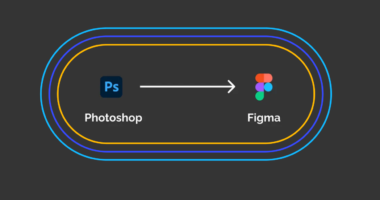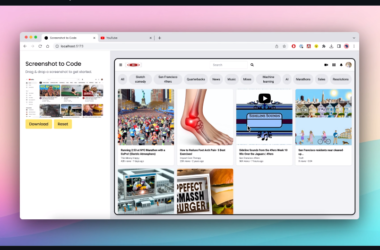
What is UX Research and Why it is Important?
From Research to Design: A Step-by-Step Guide to Conducting ux research methods
Understanding how customers interact with and utilize your offerings is paramount for product development. User experience (UX) research provides deep insights into the needs, goals and habits of people who will actually use your product or service.
Through UX research methods like usability testing, interviews and surveys, you can discover opportunities to make tweaks and refinements that enhance the overall user experience. A greater understanding of what customers are trying to achieve and where they encounter friction points allows for more informed design decisions.
The aim of UX research is to identify ways to improve the product or service in a manner that resonates most naturally and intuitively with end users. By gaining clarity on what users value and find most useful, businesses can then implement changes and innovations that genuinely solve customer problems.
Investing time to comprehend user behaviors, requirements, and pain points enables producers to construct solutions that truly solve customer problems. Products that align with how audiences naturally work become more intuitive and enjoyable to employ, resulting in a better UX and higher satisfaction.
Research conducted at the outset helps avoid expensive mistakes later on. Identifying issues beforehand allows for design modifications that save costs and time. Gleanings from users reveal preferences and desires that shape branding and marketing policies. Understanding audience desires permits tailoring offerings for a closer consumer affiliation.
In essence, UX investigation is indispensable. Insights from research permit enhancing products to match user needs while boosting engagement and fulfillment, conducing to business success. Constant improvement informed by UX study creates value by solving genuine customer issues. Products can only improve if creators comprehend how actual people utilize and experience what is designed for them.
Let’s have a look at the top 6 UX Research Methods.
- Introduction to UX research: What it is, why it’s essential, and the benefits of conducting it.
- How to define the user: Identifying the users of your product or service and their needs and goals.
- Conducting research: Different methods for gathering data, including interviews, surveys, usability testing, and A/B testing.
- Analyzing and interpreting data: Techniques for making sense of the data you’ve gathered, including creating personas and user journeys.
- Communicating findings: Strategies for presenting your research to stakeholders, including creating reports and presentations.
- Research-driven design: Using your research insights to inform your product or service design, including creating wireframes and prototypes.
Introduction to UX research: What it is, why it’s essential, and the benefits of conducting it.
Developing products and services that meet user needs requires understanding how people will interact with and utilize your offerings. User experience (UX) research focuses on studying the behavior, motivations and requirements of a solution’s intended audience.
The goal of UX research is to design products and features that are intuitive, efficient and enjoyable for end users. This encompasses identifying pain points and obstacles that create frustration as well as opportunities for improvement.
By gaining deep insights into what users aim to achieve, how they currently accomplish tasks and where they get stuck, organizations can craft solutions that genuinely solve customer problems. This leads to higher satisfaction, productivity and lower support costs.
UX research involves methods like usability testing, interviews, surveys and workflow analysis. The results provide a shared understanding across teams regarding what priorities and features will truly resonate with the intended audience. This facilitates more effective and focused product development decisions.
In summary, focusing on the user perspective through rigorous UX research enables organizations to design products and services that optimally serve their target audience. Solutions that meet real customer needs tend to earn greater loyalty, engagement and ultimately, success. Therefore, user-centered design grounded in research should form the foundation of any product development strategy.
Defining the user: Techniques for understanding who the users of your product or service are, and what their needs and goals are.
Before conducting any user experience (UX) research, it is vital to first gain insight into who the actual people using your product or service will be. Creating user personas – fictional profiles that represent your ideal customers – can help organize important information about your target audience such as demographics, behaviors, motivations, and objectives.
User personas keep the actual needs of customers at the forefront of the development process. They help everyone on the team envision the specific individuals that all design decisions aim to benefit.
Once user personas are established based on market research and available customer data, the UX research process can begin. Techniques like interviews, surveys and focus groups enable developers to gather both qualitative and quantitative information that highlights what users truly want and need from the product or service.
These insights reveal friction points, areas for improvement and opportunities for innovation through the perspective of potential buyers and end users. They can also uncover conflicting needs among different personas that must be balanced through trade-offs and prioritization.
Conducting research: Different methods for gathering data, including interviews, surveys, usability testing, and A/B testing.
There are many different methods that can be used to conduct UX research. Some popular methods include:
- Interviews: One-on-one discussions with representatives from the target user group can provide rich insights into what they seek to accomplish, where they struggle, and how processes could improve. Interview responses help flesh out user personas.
- Surveys: Questionnaires distributed to a sample of the audience generate quantitative data regarding user needs, preferences, and level of satisfaction. Well-crafted surveys using closed- and open-ended questions can reveal both trends and nuanced feedback.
- Usability Testing: Observing real users attempt defined tasks with potential solutions exposes obstacles or unclear elements within the design. Participants think aloud to provide a play-by-play of their experience, providing an eye-opening perspective for improvement.
- A/B Testing: Randomly presenting two variants of a product or feature to a group of users then comparing outcomes measures which version better accomplishes business goals. The version with superior metrics—higher conversions, timesavings, etc.—likely provides a better experience.
Analyzing and interpreting data: Techniques for making sense of the data you’ve gathered, including creating personas and user journeys.
Making sense of the data gathered during user experience (UX) research requires effective analysis techniques. Two complementary yet powerful methods are creating user personas and mapping out user journeys.
User personas represent fictional archetypes of your ideal customers. They are developed based on trends and quotes gathered from research and include key details about the persona’s demographics, motivations, behaviors, pain points and goals.
Well-crafted personas help organize raw research findings into digestible stories that represent clusters of similar users. They provide a human face for abstract customer data, making it easier for teams to develop empathy and keep the end user in mind throughout the design process.
User journeys visually map the steps a persona takes to achieve a specific outcome using your product or service. They illustrate various touch points, obstacles, and emotions a user encounters. By studying a persona’s journey, pain points and opportunities for improvement often become apparent.
Together, personas and journey maps transform interview quotes, survey responses and observational notes into actionable formats that provide valuable insights for product enhancements. They allow teams to identify gaps in the current user experience, gauge satisfaction levels and determine which features most effectively meet user needs.
Communicating findings: Strategies for presenting your research to stakeholders, including creating reports and presentations.
Communicating the results of user experience research is essential to ensuring stakeholders understand customer needs and can make informed decisions that improve the product or service.
Creating a concise yet comprehensive report is one way to share findings with non-experts. The report should summarize the research methods, collected data, and key takeaways in an accessible manner. Charts, tables and quotes can bring analytical results to life.
Giving an organized presentation is another effective means of circulating research insights. Using a consistent visual style along with charts, diagrams and images helps non-experts follow along and remember important details. Presenting key findings in order of priority reinforces which consumer issues should be prioritized.
When delivering presentations, being available to answer questions demonstrates a nuanced understanding of the work. The ability to link findings directly to recommendations for changes in product development shows how the research can impact decision making.
Applying research to design: How to use the insights from your research to inform the design of your product or service, including creating wireframes and prototypes.
Applying research findings during the design phase helps ensure solutions meet user needs.
Wireframes, which illustrate the structure and layout of a product, enable exploration of design options early on. They can uncover potential usability issues prior to development.
Prototypes, more advanced versions of wireframes, allow for testing functionality and usability. Interaction design and workflow can be simulated before devoting major resources.
Usability testing involves having real users interact with wireframes and prototypes to provide feedback. This insight improves designs before finalization to guarantee they match user expectations.
Incorporating user perspectives into the design process results in products that solve the problems important to customers, gaining higher satisfaction and loyalty. Catching issues early also avoids wasted efforts and redesign costs later on.
In summary, UX research grants an understanding of client needs and goals, while designPHASE applies that knowledge to create the ideal solution. Wireframes and prototypes, tested through usability studies, flesh out how research insights translate into an experience that fulfills user requirements. The process ultimately yields a product tailored to enhancing user workflows and achieving their desired outcomes.
In this manner, each phase of the design cycle – research, ideation, prototype, test – depends on and informs the next, forming an iterative loop that drives continuous improvement. But starting with thorough UX investigation provides the critical foundation for determining what must change and where opportunities lie to truly improve user experience.
See Also:
Design Like a Pro: The Top 15 Figma Plugins for Designers 2023




